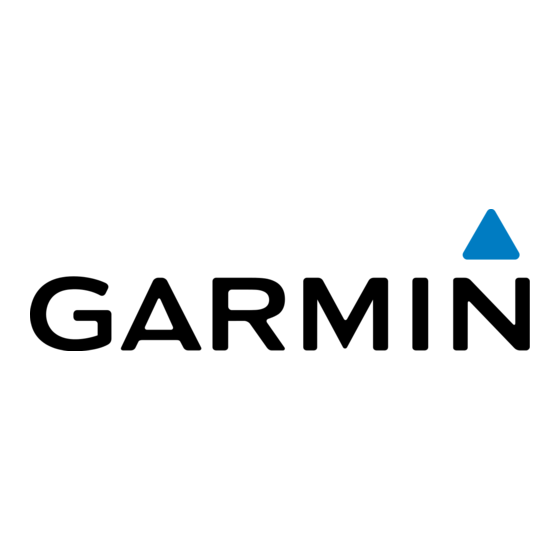Garmin GPSMAP 740 Référence technique - Page 12
Parcourez en ligne ou téléchargez le pdf Référence technique pour {nom_de_la_catégorie} Garmin GPSMAP 740. Garmin GPSMAP 740 42 pages. Bail mount template (multilingual)
Également pour Garmin GPSMAP 740 : Manuel complémentaire (20 pages), Manuel d'instructions d'installation (10 pages), Manuel de référence rapide (2 pages), Informations importantes en matière de sécurité (48 pages), Modèle (2 pages)

NMEA 2000 Fundamentals
Cable Length and Device Limits
When building your NMEA 2000 network, keep in mind these limitations:
•
The distance between any two points on the NMEA 2000 network must not exceed 100 m (328 ft). To estimate this distance, measure
between the terminators on your backbone and add the length of the drop cable for the devices connected to the T-connectors at the ends of
the network.
•
The total length of all drop cables cannot exceed 78 m (256 ft).
•
The maximum length of a single drop cable to a NMEA 2000 device is 6 m (20 ft).
•
No more than 50 NMEA 2000 devices can be connected to your NMEA 2000 network.
Existing NMEA 2000 Installation Considerations
If your boat has an existing NMEA 2000 installation, and you would like to add Garmin NMEA 2000 equipment, there are a few things to
consider:
Cable type: Garmin uses NMEA 2000 micro connectors for all cables and connectors. Your existing NMEA 2000 network may use NMEA
2000 mini connectors and cables in the backbone. Mini connectors are larger than micro connectors, and you will need to use a converter or
adapter to connect with Garmin NMEA 2000 devices.
Power: Is the existing NMEA 2000 network connected to power? A NMEA 2000 network must be connected to power to function correctly
(page
5). Do not connect the NMEA 2000 network to power at more than one location.
termination: Are terminators installed on the ends of the existing NMEA 2000 backbone? A NMEA 2000 network must be terminated to
function correctly. Do not add more terminators to a NMEA 2000 network if it is already properly terminated.
If you are unsure of any of these considerations, contact your boat manufacturer or a certified NMEA 2000 technician for assistance.
NMEA 2000 Glossary
t-connector—Three-way connector with one male and two female micro connectors. A T-connector is used to connect a NMEA 2000 device to
the NMEA 2000 backbone.
terminator—120 ohm resistor located at each end of the NMEA 2000 backbone. Proper termination helps ensure signal integrity across the
entire length of the backbone.
inline terminator—Special terminator with male and female connectors, which allows direct connection to the a device at the end of the
NMEA 2000 backbone. The inline terminator simplifies installation by not requiring a T-connector, terminator, and drop cable for the device at
the end of the backbone.
Drop Cable—Cable connecting a NMEA 2000 device to the NMEA 2000 backbone. Drop cables are limited to 6 m (20 ft.) maximum length.
Backbone Cable—In conjunction with T-connectors, the backbone cables create the main communication path of the NMEA 2000 network.
A backbone cable extends the NMEA 2000 backbone to connect NMEA 2000 devices located in different places on the boat. The maximum
backbone cable length is 100 m (328 ft.).
Device—Electronic hardware that connects to the NMEA 2000 network. A device may only receive data transmitted by other devices on the
network, or may both transmit and receive data on the network.
Network Power—12 Vdc power supplied to the NMEA 2000 network. Power should be connected through a switch (instead of directly
connected to the battery) because some devices are always on when NMEA 2000 power is present. NMEA 2000 devices must operate from 9 to
16 Vdc, with a nominal voltage of 12 Vdc.
LeN (Load equivalency Number)—A number that indicates the amount of current a device draws from the NMEA 2000 network.
1 LEN = 50 mA. Each device should have an LEN specified on the product or in the product documentation.
Technical Reference for Garmin NMEA 2000 Products
